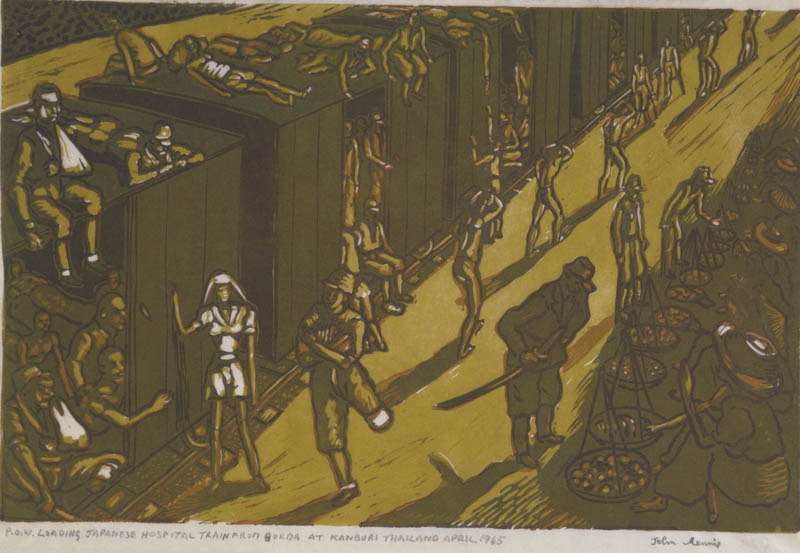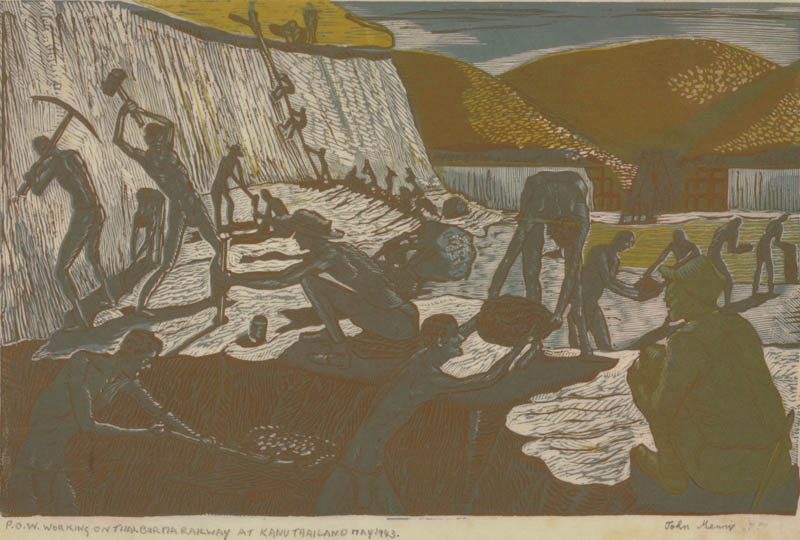IntroductionJohn George Mennie - Artist and Prisoner of War
John George Mennie was born in Aberdeen on the 26th November 1911. He was known to family and friends as Jack. He trained at Grays School of Art, Aberdeen, and the Westminster School of Art, London. |
John joined the Royal Artillery in 1940 and was posted in September 1941 to Singapore. He was captured when Singapore surrendered to the Japanese forces in February 1942 and was a prisoner of war untill August 1945. He produced a lot of artwork during his time as a POW with over fifty pieces of work archived in the Imperial War Museum, London.
John's prints were made from linocuts of the same size copied from original drawings made in the camps. These drawings were on odd bits of paper like cigarette packets, blank flyleaves found in books and even paper rifle practice targets. In exchange for cigarettes John acquired a box of Chinese watercolours. The watercolour drawings were done on the spot in the POW camps. He has sold some over the years so they will not be available for show on the website.
Roughly the prints were made from drawings as follows.
Changi Singapore 1942 : Kanu 1943 : Chungtai and Tamawau 1944 : Pratchi Thailand 1945.
You can tell from the state of the dress of the POWs when the drawings were done. The Japanese never gave any clothes and you went from the clothes you were captured in in 1942 to almost complete nudity in 1945.
After the Railway was finished in 1943-44 the Japanese used POWs as a labour corps to the Japanese Army and sent them from POW camps for various tasks. One such camp was an ammunition depot near the bridge made famous in the film. They were bombed regularly by the RAF so the Japanese decided to move the ammunition further east. Trains were loaded by POWs to accelerate this task.
When the war ended in 1945 John was working on building fortifications in the east of Thailand at Pratchi. John Mennie managed to keep his drawings hidden throughout the war but near the end of the war the Kempi Police who had a habit of searching from time to time found them and confiscated them, but they did not destroy them. The drawings were found after the war and returned.
When POW’s came home from the Japanese Prison of war camps they had to singe a undertaking to the Government that they would not talk about the War Crimes they witnessed.
His is a remarkable story of a very quiet and brave man.
|
Thank YouI would just like to take this opportunity to thank the staff at I W M for their help with information about John G Mennie, and for the CD of copies of his works of art which are archived in the museum. John provided the I W M with these in 1978.
Alex Gordon (Nephew) |


